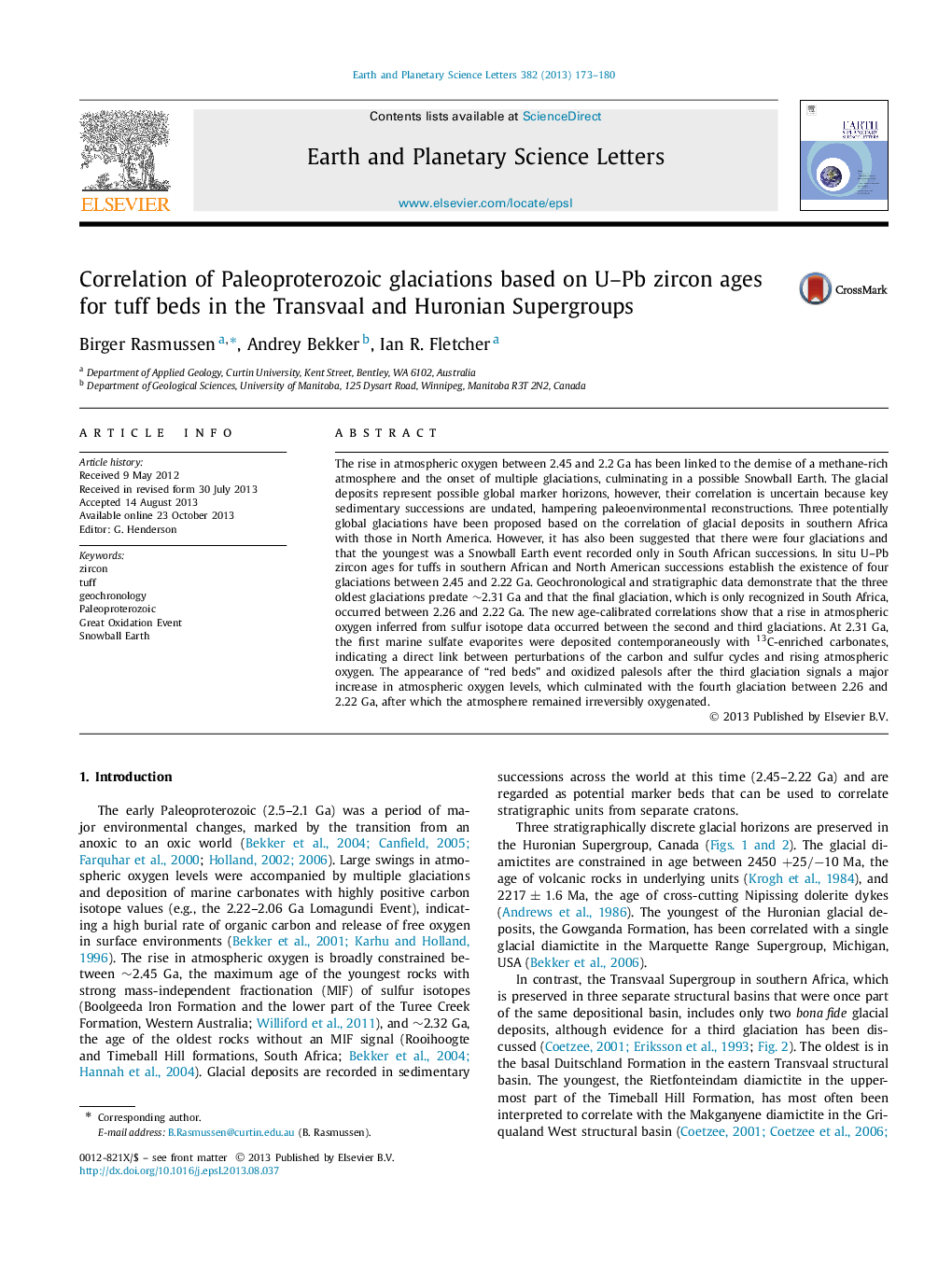| کد مقاله | کد نشریه | سال انتشار | مقاله انگلیسی | نسخه تمام متن |
|---|---|---|---|---|
| 6429985 | 1634774 | 2013 | 8 صفحه PDF | دانلود رایگان |

- Glacial units >2.22 Ga are global time markers but their correlation is uncertain.
- New U-Pb ages show that there were four glaciations between 2.45 Ga and 2.22 Ga.
- Atmospheric oxygen rose sharply between the second and third glaciations.
- The oldest identified shallow-marine sulphates were deposited at â¼2.31 Ga.
- We present a new age-calibrated framework for a key interval in Earthʼs history.
The rise in atmospheric oxygen between 2.45 and 2.2 Ga has been linked to the demise of a methane-rich atmosphere and the onset of multiple glaciations, culminating in a possible Snowball Earth. The glacial deposits represent possible global marker horizons, however, their correlation is uncertain because key sedimentary successions are undated, hampering paleoenvironmental reconstructions. Three potentially global glaciations have been proposed based on the correlation of glacial deposits in southern Africa with those in North America. However, it has also been suggested that there were four glaciations and that the youngest was a Snowball Earth event recorded only in South African successions. In situ U-Pb zircon ages for tuffs in southern African and North American successions establish the existence of four glaciations between 2.45 and 2.22 Ga. Geochronological and stratigraphic data demonstrate that the three oldest glaciations predate â¼2.31 Ga and that the final glaciation, which is only recognized in South Africa, occurred between 2.26 and 2.22 Ga. The new age-calibrated correlations show that a rise in atmospheric oxygen inferred from sulfur isotope data occurred between the second and third glaciations. At 2.31 Ga, the first marine sulfate evaporites were deposited contemporaneously with 13C-enriched carbonates, indicating a direct link between perturbations of the carbon and sulfur cycles and rising atmospheric oxygen. The appearance of “red beds” and oxidized palesols after the third glaciation signals a major increase in atmospheric oxygen levels, which culminated with the fourth glaciation between 2.26 and 2.22 Ga, after which the atmosphere remained irreversibly oxygenated.
Journal: Earth and Planetary Science Letters - Volume 382, 15 November 2013, Pages 173-180